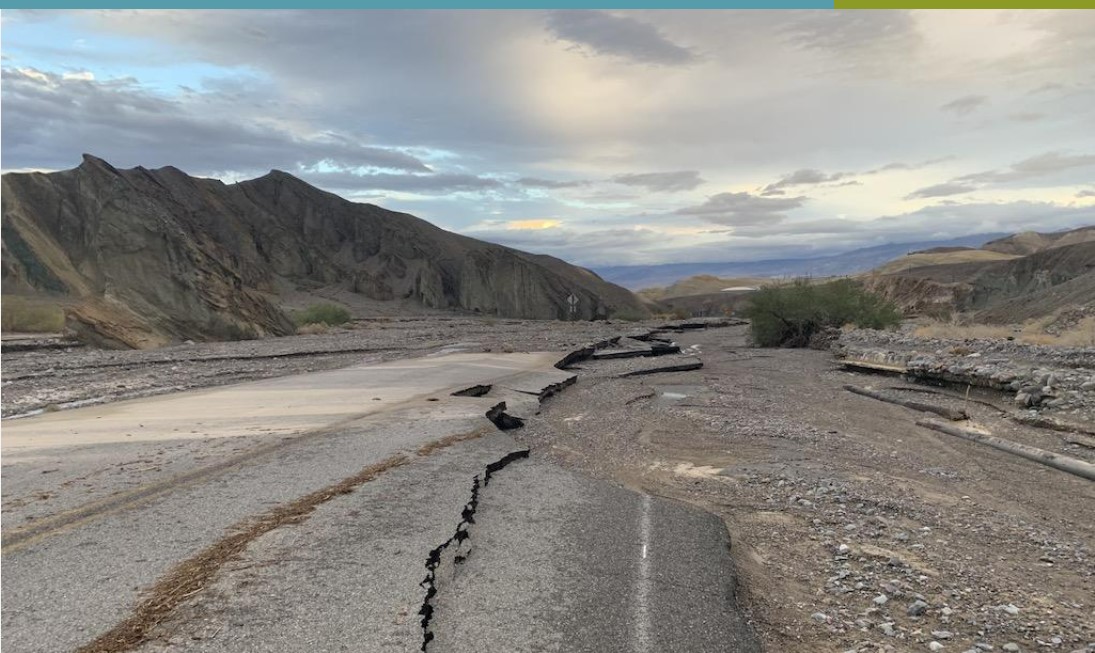National Parks Traveler reports that roughly 400 people were marooned inside Death Valley National Park on Monday due to road damage inflicted by storm Hilary, though crews were working to open some routes out of the park.
“We don’t have any exit routes for residents, employees, or visitors, a total estimate of 400 people,” park spokeswoman Abby Wines said in an email. “Caltrans is working hard to clear an admin exit route on Ca-190 from Furnace Creek to Death Valley Junction. NPS is clearing CA-190 from Furnace Creek to Stovepipe Wells.”The residents, travelers, and employees were sheltering in place at Furnace Creek, Stovepipe Wells, and Panamint Springs until area roads were safely passable. It is not known when the first sections of the park will reopen.
Most of the residents are seasonal campers, hunters, or miners. However, there are also a small number of permanent residents who live in Death Valley year-round. They are mostly employees of the National Park Service or the resorts and businesses in the valley. Some of them are descendants of the Timbisha tribe of Native Americans, who have inhabited the valley for at least the past millennium.
Damage assessments were ongoing Monday in parks impacted by the storm. Along with Death Valley, other parks closed Monday were Joshua Tree National Park, Mojave National Preserve, Manzanar National Historic Site, Cabrillo National Monument, and Lake Mead National Recreation Area.
While heavy rains stopped around midnight at Death Valley, Wines said there has been no electricity since then. Teams from California Highway Patrol, Lake Mead National Recreational Area, and Southern California Edison were all scheduled to fly over the park Monday to assess damage, she added.
Late Monday afternoon Wines said the heavy rains came in two bursts, “with about an inch of rain Sunday morning and another inch of rain Sunday night. Preliminary data from the official National Weather Service rain gauge at Furnace Creek recorded 2.20 inches of rain — the park’s average annual rainfall. Once verified, this would be the single rainiest day in Furnace Creek history beating the record of 1.7 inches set August 5, 2022. Higher amounts of rain fell in the mountains.”
“Southern California Edison restored the park’s electrical service at 1:30 p.m. on August 21, which also restored cell phone service,” she added. “The NPS land line telephones are still down. The park is also responding to a broken sewer line releasing raw sewage into the desert below Stovepipe Wells.”
The National Weather Service said “extensive areas of standing water remain across Death Valley National Park. Roads are closed due to severe flash flooding and debris flows yesterday and last night. Some locations that will experience flooding include Stovepipe Wells, Furnace Creek, Shoshone, Texas Springs Campground, Panamint Springs, Darwin, Mesquite Springs Campground, Scottys Castle, Death Valley Junction and Tecopa.”












